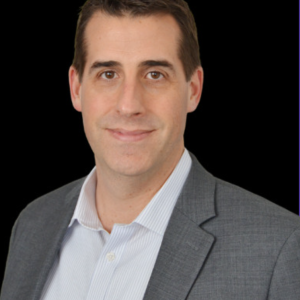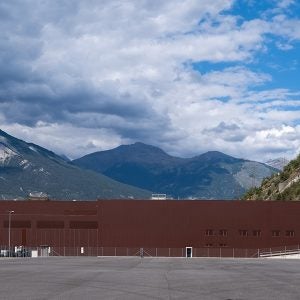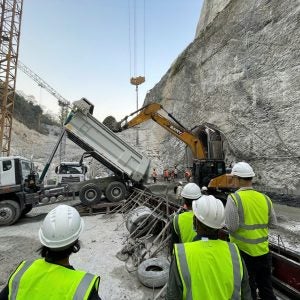As I have outlined earlier there are many influences driving the uprating and rehabilitation of hydro electric projects, making the subject one of increasing relevance, not only here in eastern Europe but elsewhere as well. These drivers include technological improvements, the liberalization of electricity markets and trends in project financing.
One of the aims of this conference is to underline the importance to the concept of uprating and rehabilitation of the multidisciplinary aspect of the work. It is not only the electrical and mechanical components of the plant that can be improved. Useful contributions can be made available from improvements to the civil works and to operation and maintenance. Consistent with this theme is WCD’s exhortation to keep plant in good condition, to encourage local pride in hydro plants. We make no apology for inviting a wide range of responses for discussion here in Prague.
6.2 Technical Developments
Generally technical development aims to improve the quality and reliability of output, to increase efficiency, reduce downtime, and reduce operator cost by remote controlled operation. Developments are occurring rapidly not only for hydro assets, but also for transmission technology. This has an immediate impact on system-level optimisation of thermal, hydro, nuclear and newer intermittent generators such as wind, wave and solar.
The pace of technological development appears to be accelerating and there are many opportunities to optimise performance at the plant and system level. Some countries have not kept up with improvements and modernization for many reasons. Consequently there is an enormous need with opportunities building up.
For hydro projects, as the papers received for this conference confirm, there is a robust business in developments in the electrical and mechanical field, including control systems and remote control and monitoring. In the civil engineering field there are developments in improved fish passages, environmental mitigation techniques, reservoir sediment management and dam safety. More specifically for conventional generation technologies including hydro and cogeneration, the reduction of capital cost and increase in efficiency are among the more important
Reduction of Capital Cost
Compared with the customised approach for project design and construction, standardisation and modularisation can reduce the cost of a thermal power plant by up to 10%. The savings for new hydro may be lower because of the site specific nature of such projects. Savings from standardisation come in three categories: detailed engineering and supervision, price contingencies and interest during construction. Computerised design and use of modern materials and construction methods also reduce capital costs. Roller compacted concrete is an example of a new technology for dam construction.
Increase in Efficiency
The recent gain of efficiency of hydro plants has been incremental, as the technology already produced a high overall efficiency. Thus the efficiency of turbines and generators has increased by 1 to 3 percentage points in the past 10 years. As for thermal plant, bigger unit sizes leads to higher efficiencies. However, significant efficiency improvements are being demonstrated through decision support systems operating a complex of dams and reservoirs on a basin level and optimising better with thermal operation. Improvements are noted in management techniques, of which Nielson’s approach is an interesting example, using maintenance management systems and bespoke computer software to give better prioritised decisions for each plant.
6.3 Risk management
Operators of hydro projects increasingly carry out risk management to assist in identifying and quantifying the potential threats to the works. This allows better decisions to be made concerning the rehabilitation of ageing components taking account of both the value of the asset to the business and the safety. A benefit is to allow the prioritisation of rehabilitation where lack of funds do not allow all the work to be done immediately.
A technique described by Beak et al (1997) is known as Failure Mode Effect and Criticality Analysis (FMECA). This is based on British Standard 5760 and involves applying simple criteria to an engineering system in order to identify the area of greatest risk.
Further developments in Portfolio Risk Assessment (PRA) are discussed by Bowles (1998) for example. The usual approach is base the assessment on available information, without performing extensive additional analyses or investigations. The work is usually conducted at a reconnaissance level and makes use of professional judgement, which leads to an engineer certifying aspects of security of the works. As with FMECA the technique leads to a qualitative rather than a quantitative assessment.
The technique of probabilistic risk analysis has been described by Vick (1996) for example. In this approach all possible failure scenarios are identified and these are developed into an event tree which leads to a probability of failure for the given failure scenario. Work is progressing in this area, which is suitable theme for a future conference
7 THE MULTIDISCIPLINE APPROACH
7.1 Introduction
As I hope I have explained clearly enough, there are usually multiple objectives to a programme of uprating or rehabilitation of hydro projects. These include the safety of the works on one hand and improvements or, better, the optimisation of the output of a project on the other. These objectives will be better met if they are approached by a team with broad based experience. Experience shows that solutions proposed by narrowly experienced teams can fail embarrassingly. The make up of the panels with experts in a wide range of fields at this conference tends to confirm this assertion.
In the context of this conference, multidiscipline implies a greater involvement of civil engineering as well as consideration of environmental, social and political aspects. I hope it will suffice if I spend a few minutes outlining the relevance of civil engineering to uprating and rehabilitating hydro electric projects.
7.2 Value of civil engineering improvements
A review of the condition of the civil works can lead to proposals for improved efficiency and output. These are available through decreasing head loss, diversion of water from adjacent catchments, raising the pond level, lowering the tailwater level, reducing expenditure on maintenance of ageing structures, maintaining access for emergency and normal use.
Uprating and rehabilitation works have to satisfy a business case, which has to do with value for money for the owner as well as safety. The safety of the works lies particularly in the domain of the civil engineer who has to advise on the safety of water retaining structures for example. It may be possible to modify the layout of the project to improve its environmental impact.
7.3 Modern trends in civil engineering rehabilitation
The key issues that dominate discussion of the rehabilitation of civil works for power stations will probably be those identified by ICOLD in their recently published Bulletin 119 which deals with dams and their appurtenant works.
Ahead of all is the increasing interest in working underwater, often, but not always, to repair or replace ageing valves and gates. The economic value of a reservoir full of water is too great to be ignored. Useful collaboration is taking place between civil engineers and specialist diving contractors used to working underwater in the oil industry.
Geomembranes are among the most successful modern techniques used to protect concrete or masonry from the effects of immersion in water. This becomes a particularly useful technique for the rehabilitation of a power station when methods are devised to allow this work to be done economically without lowering the level of water in the reservoir.
The third trend is the rehabilitation of deep foundations at dams and at power stations and other appurtenant works to correct problems with internal erosion, grouting or drainage.
I look forward to hearing more about the solution of these problems in the context of this conference
8 CLOSING REMARKS
In concluding, I offer you a summary of my key points:
· Eastern Europe is a particularly exciting place to be at the moment. The particular combination of countries rapidly liberalising their political and technical systems, the growth of interconnected power systems, and the influence of the European Union all conspire to make this a region where investment in uprating and rehabilitation will be particularly profitable.
· The World Commission on Dams has presented us with a report that encourages us to think in terms of good stewardship of our projects. We should take advantage of this.
· Overcoming barriers to the uprating and rehabilitation of hydro projects is a challenge before us. Communication skills are of the highest importance in order to work effectively with traditional opponents of our projects. In developing projects we should think of ourselves as business men and politicians in addition to being engineers. We need to rise to meet the largely non-technical challenges being mounted.
· Uprating and rehabilitation of existing projects and the faithful monitoring of their performance against the design criteria will be important in ensuring their continuing safety and efficiency. The pace of technological development in these fields is growing and can be applied both at the plant level and also in relation to the operation of mixed systems. A multidiscipline approach is more likely to provide economically viable and safe uprating and rehabilitation plans.
I have not sought to tell you anything new in this keynote address. Rather I have sought to remind you of what you all know of some of the challenges we engineers face. I hope that this awareness will rest with us during our discussions. I am looking forward to learning about advances in the fields of technical developments, the identification and overcoming of barriers to developing hydro projects, and more about the possibilities that exist in
Eastern Europe. We share a responsibility for the optimised development of hydroelectric projects worldwide. Let us grasp it.
Ladies and Gentlemen. I thank you for your attention. I wish this conference every possible success.
REFERENCES
BEAK C, FINDLAY J W &AIKMAN D I, 1997.Experience of failure mode, effect and criticality analysis on UK hydro power schemes. Hydropower ’97, Trondheim.
BOWLES D S, ANDERSON L R, GLOVER T F & CHAUHAN S S, 1998. Portfolio Risk Assessment: a tool for dam safety risk management. 18
USCOLD annual Meeting and Lecture, Buffalo, New York, 8-14 August.
HOLDEN N, 2001. Central and eastern Europe: more discontinuity than change. Proceedings of the Institution of Civil Engineers vol 144 May, pp4-8, Paper 12504.
INTERNATIONAL COMMISSION ON LARGE DAMS, 2001. Rehabilitation of Dams and Appurtenant Works. Bulletin 119, Paris.
INTERNATIONAL JOURNAL ON HYDROPOWER & DAMS, 2000. Hydropower and Dams in 2000. Aqua-Media International, Sutton, SM 4JH, UK.
INTERNATIONAL RIVERS NETWORK, undated. Reviving the World’s Rivers: The Global View of Dam Removal.
INTERNATIONAL WATER POWER & DAM CONSTRUCTION, 2001. News items. October, p5.
MAXWELL D, 2001. Financing infrastructure in central and eastern Europe. Proceedings of the Institution of Civil Engineers, vol 144, May, pp14-18, paper 12544.
MINASOWICZ A, WHYTE I & NOWAK P, 2001. Poland – the last 10 years and future development. Proceedings Institution of Civil Engineers, vol 144, May, pp19-25, paper 12503.
PALMER J, 2001. Environmental issues in central and eastern Europe. Proceedings Institution of Civil Engineers, vol 144, May, pp33-39, paper 12508.
VICK S B G & STEWART R A, 1996. Risk Analysis in dam safety practice. ASCE geotechnical speciality conference Uncertainty in Geologic Environment: from theory to practice.
WORLD COMMISSION ON DAMS, 2000. Dams and development. A new frameworkfor decision-making. Earthscan Publications, London. ISBN 1 85383 798 9
Related Articles
URHP keynote speech – part 1






